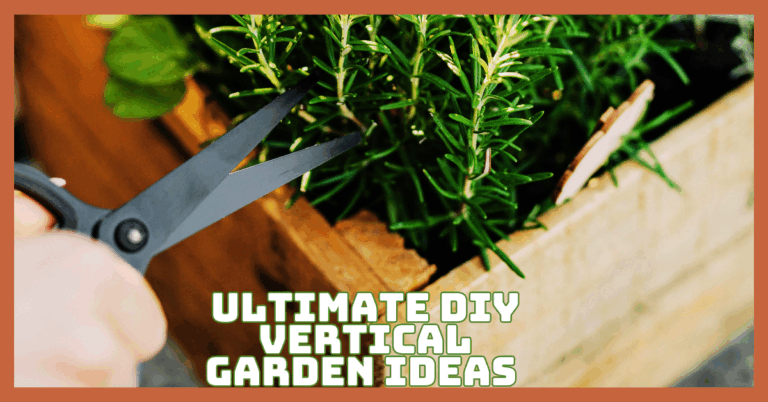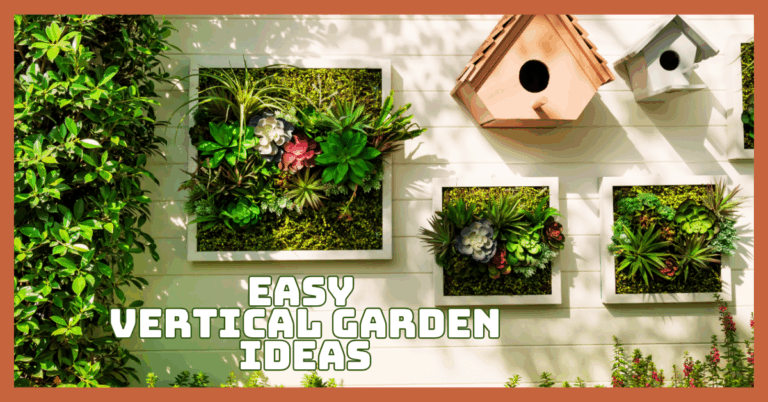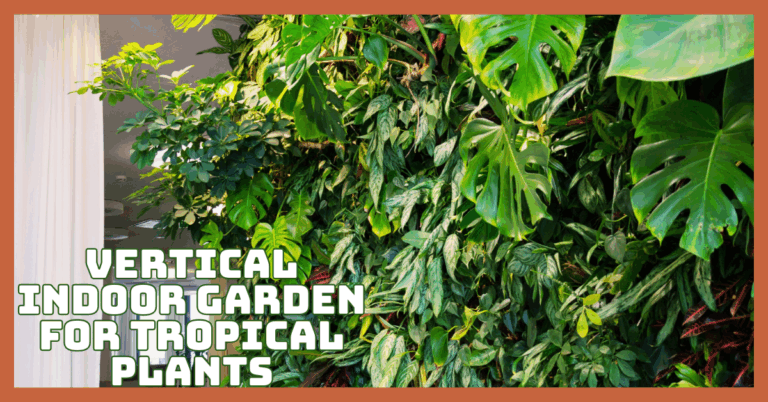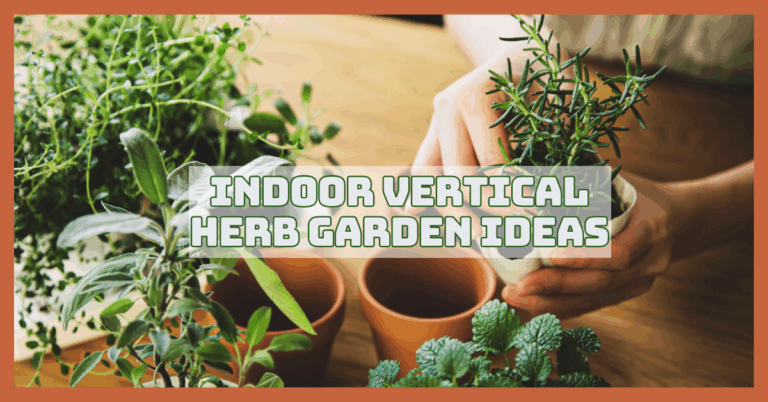Beautiful Vertical Indoor Herb Garden
Transform Your Home With A Beautiful Vertical Indoor Herb Garden
Transforming your home with a vertical indoor herb garden is a stylish and practical way to bring nature indoors. Small places are ideal for these gardens, improving your décor and giving your food a new taste. Whether you’re a seasoned gardener or a beginner, vertical herb gardens are easy to set up, maintain, and customize.
This article will explore the benefits, best herbs to grow, and creative ideas to help you build your own lush, space-saving indoor garden.
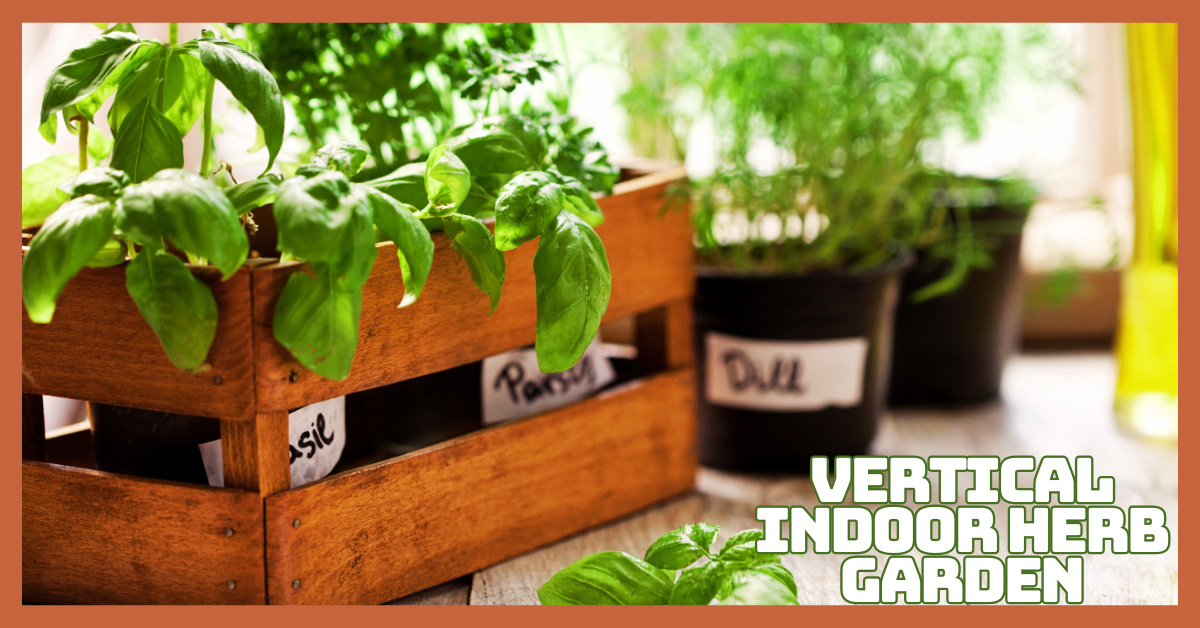
Benefits Of A Vertical Indoor Herb Garden
Growing a vertical indoor herb garden offers space-saving, fresh herbs, improved air quality, and beautiful decor while being low-maintenance, eco-friendly, and perfect for year-round enjoyment and wellness.
1. Space-Saving Solution
A vertical indoor herb garden maximizes limited space by growing upward instead of outward. It’s perfect for small apartments or tight kitchen areas where traditional gardening isn’t possible, allowing you to enjoy fresh herbs without sacrificing square footage.
2. Easy Access To Fresh Herbs
Having a vertical garden indoors means your favorite herbs are always within reach. This convenience allows you to snip fresh basil, mint, or oregano whenever needed, enhancing the flavour of your dishes and supporting a healthier cooking lifestyle.
3. Improved Air Quality
Mint, parsley, and rosemary are indoor herbs that help filter the air by releasing oxygen and absorbing contaminants. This helps create a healthier and fresher atmosphere at home, particularly in cities where air quality can be an issue.
4. Aesthetic Appeal
A vertical herb garden adds a natural, green focal point to any room. It enhances interior decor with vibrant colours and textures, making your space feel more alive, welcoming, and connected to nature, even in a modern or minimalist setting.
5. Low Maintenance
Many vertical garden systems are designed for easy care, often including features like self-watering reservoirs or proper drainage.
This reduces the time and effort needed for upkeep, making it perfect for beginners or busy individuals with little gardening experience.
6. Year-Round Gardening
Growing herbs indoors allows you to enjoy a continuous harvest regardless of the season. Protected from harsh weather, your herbs thrive under consistent indoor conditions, giving you a fresh supply in winter or during rainy monsoon seasons.
7. Educational And Therapeutic
Maintaining a vertical herb garden provides a relaxing, hands-on activity that can reduce stress. It’s also a great way to teach children about sustainability, plant growth, and healthy eating habits, promoting mindfulness and connection with nature.
8. Eco-Friendly And Sustainable
Growing herbs at home reduces the need for plastic packaging and long-distance transportation. This reduces carbon emissions and waste, helping you live a more sustainable lifestyle while enjoying fresh, organic produce daily.
The Greatest Indoor Vertical Garden Herbs
A vertical indoor herb garden is ideal for growing fresh, flavorful herbs year-round in compact spaces with the right light and care. These herbs thrive in containers with proper light and care, perfect for kitchen windowsills, balconies, or indoor vertical gardens.
1. Basil
Basil thrives in containers and requires 6–8 hours of sunlight, making it ideal for sunny indoor spots or under grow lights. Its compact growth habit fits perfectly in vertical planters. Regular harvesting encourages bushier growth.
Basil flourishes in USDA Zones 10–11 outdoors but is easily grown indoors year-round in any zone with proper warmth and light, making it a top choice for indoor vertical herb gardens.
2. Mint
Growing vigorously and adapting well to containers, mint helps control its otherwise invasive tendency. It does well in vertical gardens with moderate light and consistent moisture. It is a favourite for teas and recipes because of its adaptability and refreshing scent.
Mint prefers USDA Zones 3–11, but indoors, it grows year-round in any climate when kept moist and trimmed. Its adaptability makes it perfect for small, vertical growing spaces.
3. Parsley
Parsley grows well in containers with at least 4–6 hours of light daily, and vertical gardens provide ample space and airflow. It tolerates partial shade, perfect for indoor areas with filtered sunlight or artificial lighting.
Ideal for USDA Zones 4–9 outdoors, parsley can be grown year-round indoors with consistent watering. It’s a nutritious, versatile herb that thrives with minimal effort in a vertical garden setup.
4. Chives
Chives have a small footprint and upright growth, making them perfect for vertical gardening. They require 4–6 hours of sunlight or LED grow lights indoors and need only moderate watering. They regrow quickly after harvesting, providing a continuous supply.
Suitable for USDA Zones 3–9, chives adapt easily to indoor conditions, allowing you to enjoy their mild onion flavour throughout the year. They're low-maintenance and highly productive in tight vertical spaces.
5. Thyme
Thyme is a low-growing, woody herb that thrives in well-draining containers and loves full sun. It requires minimal water, making it perfect for vertical setups where drainage is key.
Ideal for USDA Zones 5–9, thyme can be grown indoors with good lighting, even during winter. Its dense foliage and trailing habit make it both ornamental and functional in a vertical garden, providing fresh seasoning for soups, meats, and vegetables.
6. Oregano
Although it thrives year-round indoors with 6–8 hours of sunlight or light, oregano is a perennial plant in USDA Zones 5–10. It thrives in vertical gardens due to its bushy, trailing nature, which fills containers well without needing much space.
Oregano prefers dry conditions and minimal watering, which makes it ideal for vertical gardening where drainage is crucial. It adds robust flavour to dishes and is simple to maintain indoors.
7. Cilantro (Coriander)
Cilantro grows quickly and prefers cooler temperatures, making it ideal for indoor vertical gardens that avoid extreme heat. It needs 4–6 hours of sunlight and regular watering to prevent bolting.
Outdoors, it grows best in USDA Zones 3–11 during cooler months, but indoors, it thrives with consistent moisture and airflow. Its fast harvest cycle and culinary versatility make it a favorite among vertical garden enthusiasts with limited space.
8. Rosemary
Rosemary enjoys bright light and well-drained soil, which is achievable in vertical wall planters or tower gardens. It prefers drier conditions and is drought-tolerant, which suits vertical systems.
Hardy in USDA Zones 7–10 can be grown indoors in cooler zones with 6–8 hours of direct sunlight or under grow lights. Its fragrant, needle-like leaves and woody stems are great for flavouring, and its vertical growth habit fits narrow spaces.
9. Lemongrass
Lemongrass is a tall, clumping herb perfect for vertical planters with deeper pockets. It needs at least 6 hours of sunlight daily and warm temperatures, growing best in USDA Zones 9–11.
Indoors, it thrives near sunny windows or under strong grow lights. With its citrus scent and culinary uses in teas and soups, lemongrass is an attractive, aromatic addition to any vertical herb garden, providing consistent warmth and light.
10. Dill
Dill grows quickly and vertically, making it well-suited to tall pockets in vertical gardens. It prefers full sunlight and consistent watering and thrives outdoors in USDA Zones 3–11.
Indoors, dill is easily grown year-round in sunny spots or with supplemental light. It bolts in hot temperatures, so an indoor controlled environment is ideal. Its feathery foliage adds texture to your garden and flavour to dishes like pickles, fish, and dressings.
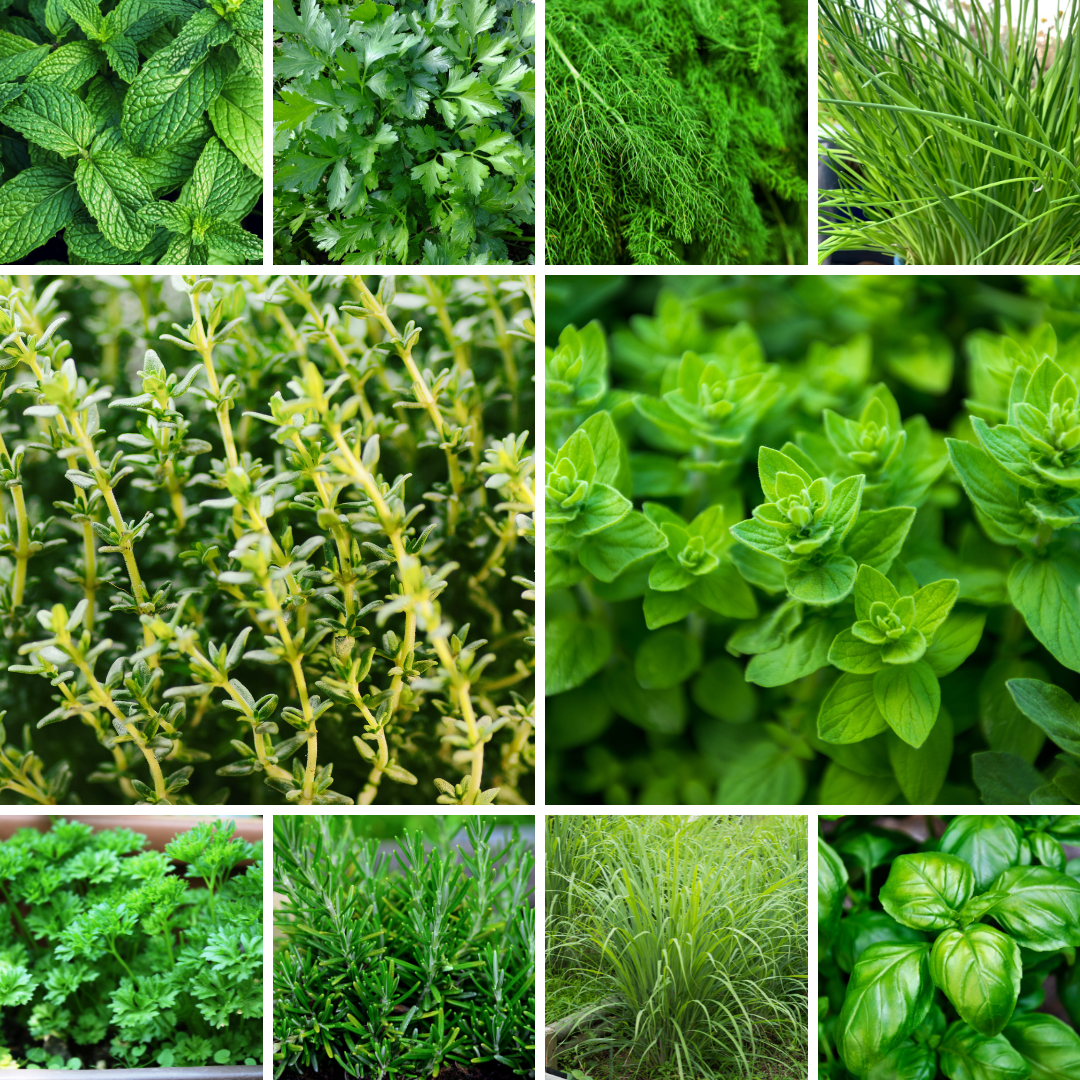
Types Of Vertical Herb Garden Systems
Creating a vertical indoor herb garden allows you to maximize small spaces while enjoying a continuous supply of fresh herbs throughout the year.
Perfect for small areas, these creative setups suit various climates, budgets, and herb types, bringing fresh greenery to any home or patio.
1. Hanging Gutter Ladder Garden
Perfect for parsley, thyme, and marjoram, this works in Zones 6–10. Combine the ladder and gutter garden concepts by hanging horizontal gutters from the steps of an A-frame ladder.
Drill drainage holes, fill with soil, and plant herbs spaced apart. Position the setup where it receives 4–6 hours of sun. Water from the top gutter should be allowed to flow downward.
The total cost is about $40–$80. This creative design is functional and decorative, making it a conversation piece in your garden.
2. Tiered Shelf Gardens
Tiered shelves suit herbs like basil, chives, and mint, which flourish with more airflow and light. These systems thrive in Zones 5–10, especially in areas with moderate sun.
To build this garden, use a wooden or metal shelf with 3–4 levels. Add small pots filled with potting soil on each tier. Ensure each tier gets enough light and water evenly.
Shelves can be DIY with repurposed furniture or bought for $50–$150. Tiered gardens are ideal for balconies or patios and are easy to move or modify seasonally.
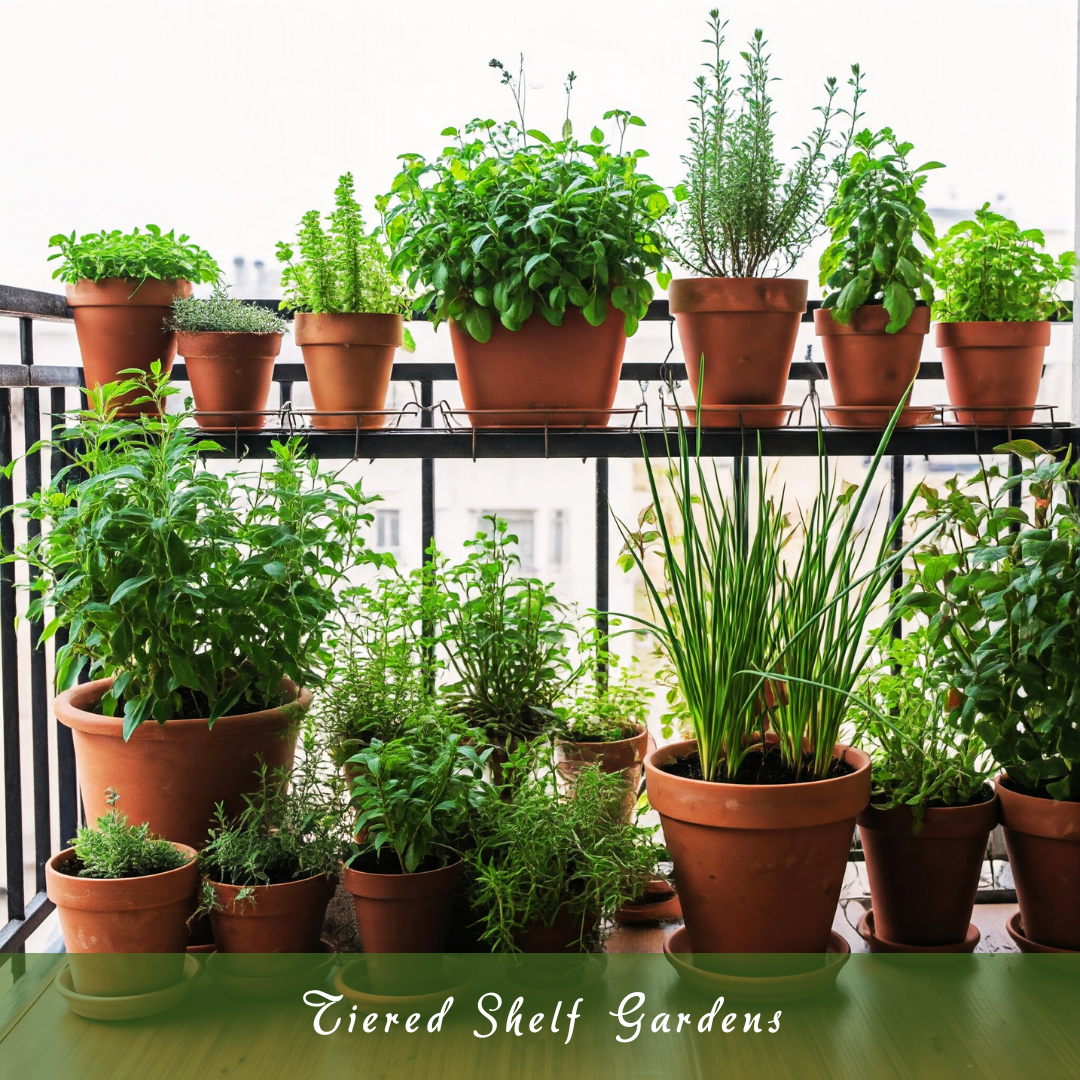
3. Tower Planters
Tower systems suit compact herbs like basil, thyme, and lemon balm. They suit Zones 4–11, especially with limited ground space. Setup involves buying a vertical tower with stackable planting pockets (some come with drip irrigation).
Fill each pocket with well-draining soil, and rotate towers periodically for even sunlight exposure. Plant herbs based on sun tolerance—shade-lovers at the bottom, sun-lovers on top.
These towers cost around $80–$200, depending on features. They're great for small backyards, patios, or indoor hydroponic towers.
4. Gutter Gardens
Recycled gutter gardens are excellent for rosemary, chives, and oregano, which don’t need deep soil. These systems work best in Zones 6–9, particularly in sunny spots.
Start by cutting old rain gutters to desired lengths, drilling drainage holes, and mounting them horizontally on walls or fences. Fill with soil and add herbs.
Water from the top row and let gravity feed the others. The budget is around $15–$50 if recycling, or up to $100 for new materials. It's a sustainable and creative method for vertical herb gardening with a modern look.
5. Hanging Herb Gardens
Hanging gardens are ideal for lightweight herbs like cilantro, dill, and sage. Best in Zones 6–10, especially for indoor or porch use. Set up includes hanging containers like mason jars, coconut coir pots, or tin cans from a rod or ceiling using hooks.
Fill with a light potting mix, insert herbs, and ensure good drainage. They require daily monitoring for sunlight and watering.
Depending on container type and hardware, costs range from $20 to $60. These gardens bring charm and are perfect for renters or those wanting a movable green feature.

6. Pallet Gardens
Pallet gardens work well with mint, parsley, and tarragon, which are resilient and spread well. Suitable for Zones 5–10, they thrive in sunny to partial shade areas.
Use a clean, heat-treated wooden pallet. Line the back and bottom with landscape fabric to hold soil. Fill each row with potting mix and plant herbs between the slats.
Stand it upright against a wall or fence. Water gently to avoid erosion. Pallets can be free or cost up to $30, making this one of the most budget-friendly and rustic systems.
7. Stackable Planters
Any vertical indoor herb garden would benefit significantly from stackable planters, which provide a small, effective way to cultivate herbs like basil, thyme, and coriander in a small space.
They’re versatile across Zones 4–10. This system involves stacking modular containers vertically, each with its own soil compartment and built-in drainage. You fill each tier with potting mix, plant your herbs, and stack.
Water from the top trickles down through each layer. These planters cost around $40–$120. Easy to set up and great for porches or balconies, they let you rotate the stack for even sunlight distribution.
8. Hydroponic Vertical Systems
Hydroponic towers are best for fast-growing herbs like basil, mint, and watercress. These systems are optimal for indoor growers or in Zones 3–11 with climate control.
Purchase a hydroponic tower kit with a pump, nutrient solution, and net pots. Set up the tower, fill the base with water and nutrients, and plug in the system.
Herbs grow in water without soil and mature faster than in traditional gardening. Cost starts at $150–$500+, depending on automation. These systems require electricity and attention but deliver high yields in compact spaces.

9. Pocket Shoe Organizer Garden
This creative method is excellent for herbs like parsley, oregano, and basil. Best for Zones 6–10, it works well in sunny outdoor walls or porches.
Use a fabric shoe organizer with pockets—preferably made of breathable material. Place one herb in each slot, fill each pocket with potting mix, then hang it on a wall or fence.
Ensure proper drainage by poking small holes at the bottom. Water lightly and often. It's affordable, costing $10–$30, making it ideal for budget-conscious gardeners and renters.
10. PVC Pipe Garden
Due to the shallow root space, herbs like chives, thyme, and sage thrive in PVC pipe systems. This works in Zones 5–9 in full sun. Use a large-diameter PVC pipe, cut holes along one side for planting, and drill drainage holes at the bottom.
Fill with potting soil, insert herbs, mount it on a stand or hang it horizontally. Water regularly from the top end. Depending on pipe size, the total cost is around $25–$60. It’s a sleek, modern, low-cost option using readily available materials.
11. Wall-Mounted Planters
Wall-mounted planters are perfect for herbs like thyme, oregano, and parsley, which don’t need deep root space. These work well in USDA Zones 4–9, ideally on a sunny south-facing wall.
The process involves securing vertical panels or fabric pocket systems to a wall or fence, filling them with quality potting mix, and planting herbs. Water regularly using a gentle spray or drip system.
Materials can cost between $30 and $100, depending on the planter size and quality. These are ideal for urban gardeners with limited space and access to walls or fences.
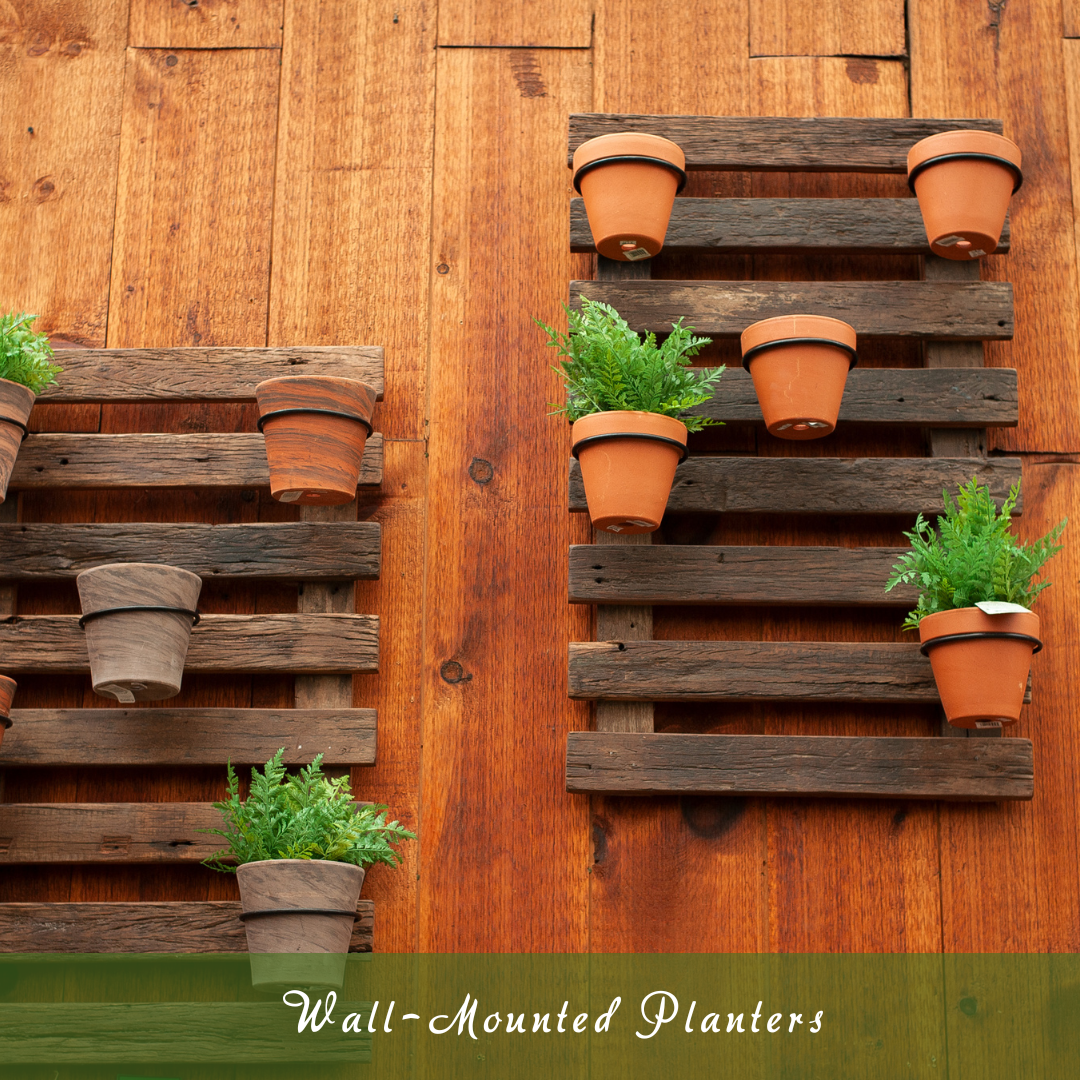
12. Trellis With Planter Boxes
Ideal for rosemary, mint, and lavender, this works beautifully in Zones 5–10. A trellis system with planter boxes is a stylish way to create a vertical indoor herb garden, perfect for growing herbs like rosemary, mint, and lavender in a structured, space-saving setup.
This method provides climbing support and aesthetic appeal. Water each box individually and ensure drainage. Costs range from $40 to $120, depending on the number of boxes and trellis material. It’s an elegant way to combine structure and greenery, suitable for patios or entryways.
13. Ladder Garden System
Herbs like cilantro, dill, and basil perform well in this layered layout. This system suits Zones 5–9 and sunny backyards or decks. Use an old ladder or build a custom one with wide steps.
Place containers on each rung filled with potting mix and herbs. This angled setup allows sun exposure at all levels. Water flows from the top rung downward to avoid overflow.
Depending on materials, cost can range from $30 to $100. It’s a great upcycling option and adds rustic charm to outdoor spaces.
14. Crate Stack Herb Garden
Ideal for chives, oregano, and basil, this system thrives in Zones 4–9. Stack wooden or plastic crates vertically, staggered, filling each level with soil.
Plant herbs in exposed areas while the stack is a structure and a planter. Crates provide excellent airflow and drainage. Line crates with landscape fabric to hold soil.
Water carefully to avoid soggy roots. This system can cost between $20 and $50 if using repurposed materials. It’s an excellent DIY option for rustic and small-space gardens.

Conclusion
A vertical indoor herb garden is an innovative, stylish way to grow fresh herbs year-round, even in the smallest spaces. It enhances your home’s look, provides easy access to flavourful ingredients, and brings a touch of nature indoors.
You may enjoy a flourishing garden that promotes a healthier, more sustainable lifestyle with the proper setup and a little maintenance.
Start small, stay consistent, and soon your vertical herb garden will become a beautiful, functional feature in your home.
I trust you enjoyed this article on Transform Your Home With A Beautiful Vertical Indoor Herb Garden. Please stay tuned for more blog posts soon. Take care!
JeannetteZ
>>> Please click here to read my all-inclusive article, About The Essential Companion Planting Guide <<<
>>> Please click here to read my all-inclusive article about Container Gardening <<<
>>> Are you interested in homegrown herbs and medicine? Please click here to find out more about it! <<<
Your Opinion Is Important To Me
Do you have thoughts, ideas, or questions? I would love to hear from you. Please leave me your questions, experiences, and remarks about this article on Transform Your Home With A Beautiful Vertical Indoor Herb Garden in the comments section below. You can also email me at Jeannette@Close-To-Nature.org.
Disclosure
This post may contain affiliate links. As an Amazon Associate and other affiliate programs, I earn from qualifying purchases at no extra cost to you. Please read my full affiliate disclosure.
You might also enjoy these blog posts:
Vertical Indoor Garden for Tropical Plants
Ultimate DIY Vertical Garden Ideas To Transform Your Space
Best Types Of Mulch For Gardens
Master The Feng Shui Bagua Map For A Life Of Abundance And Joy
Top Feng Shui Rules To Attract Joy, Balance, and Energy
Feng Shui For Cats That Elevates Your Pet’s Comfort And Peace


